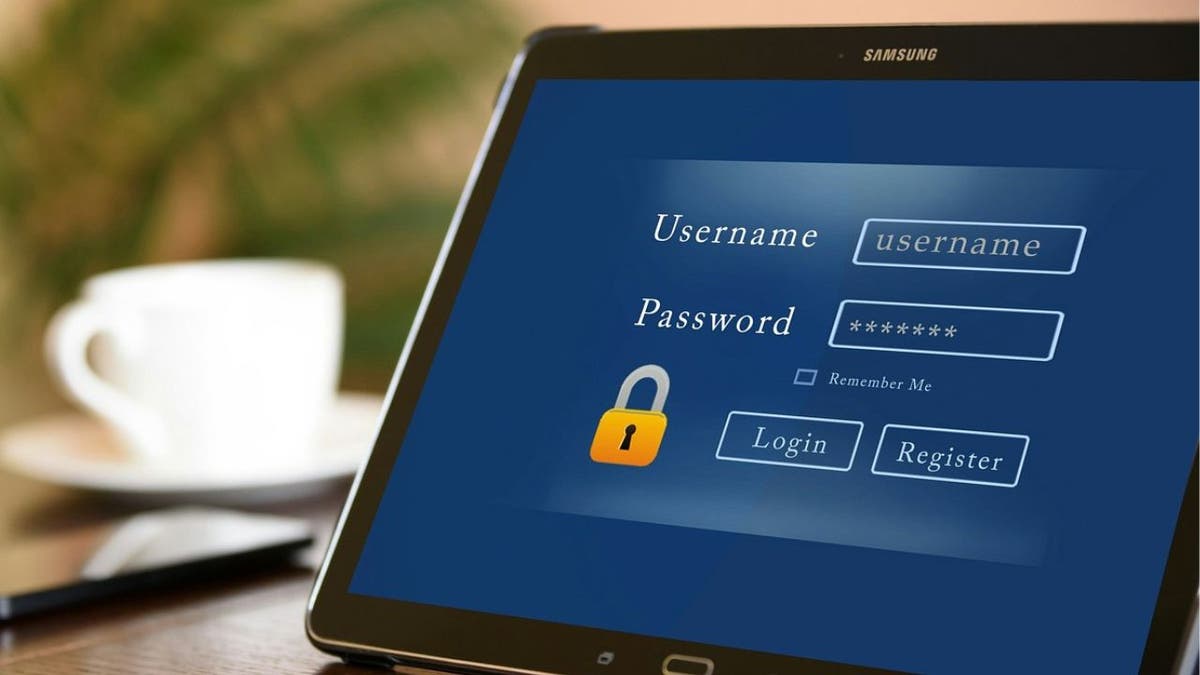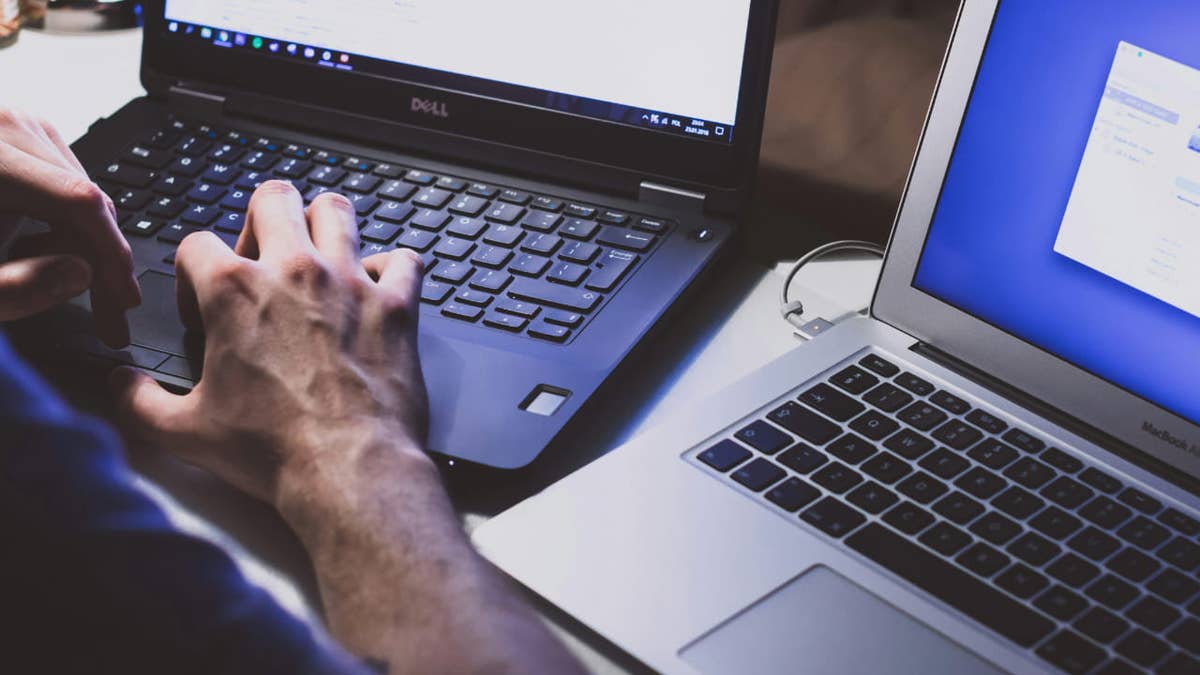Data breaches are no longer rare events, but a persistent problem.
We have been seeing regular incidents in public -oriented companies in various sectors, such as health care, retail and finance. While bad actors are to blame, these corporations are not fully to blame. They often make it easier for hackers to access users’ data by not protecting them correctly.
A recent example came to light when a cybersecurity researcher discovered an open database containing more than 184 million account credentials.
Join the Free Cyberguy report: Get my expert technology tips, critical security alerts and exclusive offers, as well as instantaneous access to my free scam survival guide when you register.
Illustration of a computer pirate at work. (Kurt “Cyberguy” Knutsson)
As the database was discovered and what it contained
Cybersecurity researcher Jeremiah Fowler has revealed The existence of an open database containing 184,162,718 million account credentials. Email addresses, passwords, usernames and URL are included for platforms such as Google, Microsoft, Apple, Facebook and Snapchat.
The information also covers banking services, medical platforms and government accounts. The most shocking, the whole data set was completely not guaranteed. There was no encryption, there was no need for authentication and no way of access control. It was simply a normal text file located online to find anyone.
19 billion online passwords have been leaked -how to protect —s
Fowler located the database during the publicly exposed routine scanning. What he found was impressive. The file included hundreds of millions of unique records containing credentials of users linked to the largest communication and technology platforms in the world. There were also details of the account for financial services and the official portals used by state institutions.
The file was not protected in any way. Anyone who discovered the link could open it in a browser and immediately see sensitive personal data. No software operation was needed. No password was requested. It was as open as a public document.

Illustration of a computer pirate at work. (Kurt “Cyberguy” Knutsson)
200 million social media records were leaked to breach X Major X
Where did the data come from
Fowler believes that the data was harvested by an infosteler. These lightweight tools are favored by cybercrimers because of their ability to silently extract the login credentials and other private information on committed devices. Once stolen, data is often sold in dark web forums or are used in directed attacks.
After reporting the breach, the accommodation provider quickly removed access to the file. However, the database owner is still unknown. The supplier did not reveal who hung him or if the database was part of a legitimate file that was accidentally published. Fowler could not determine if this was the result of negligence or an operation with malicious intent.
To verify the data, Fowler contacted some people listed in the records. Several confirmed that the information was accurate. This confirmation turns what may seem abstract statistics into something very real. They were not outdated or irrelevant details. These are live credentials that could allow any abduction personal accounts in seconds.
1.7 billion passwords were leaked to the dark network and why yours is at risk

Sign in on a tablet. (Kurt “Cyberguy” Knutsson)
The human resources sign
6 ways to protect —s after a breach of data
1. Change your password to each platform: If the login credentials were exposed, it is not enough to change the password of a single account. Cyberdeliners often test the same combinations on various platforms, hoping to access through reused credentials. It begins by updating the most critical accounts, email, banking, cloud storage and social networks, and then happens to others. Use a new and unique password for each platform and avoid variations in old passwords as they can still be predictable. Think of using a Password manager to generate and store complex passwords.
Our Passwords Manager Greater Valued It offers powerful protection to help keep your accounts safe. Ready Monitoring of real -time data breaches To warn you if the login details were exposed, as well as an integrated Data breach scanner This checks the emails, passwords and credit card information stored against known leak databases. A password health controller also highlights weak, reused or committed passwords, so you can strengthen the defenses in line with only clicks. Get more details about my The best password managers reviewed by 2025 experts here.
2. Activate the authentication of two factors: Authentication of two factorsor 2fa, is a critical security feature that dramatically reduces the risk of unauthorized access. Even if someone has your password, you will not be able to sign in without the second verification step, usually a single code sent to the phone or to a authenticer app. Enable 2FA in all the services that admit it, especially your email, financial accounts and any service that stores sensitive personal data.
3. Watch the unusual account activity: Following a breach, it is common for committed accounts to be used for junk, scams or identity theft. Pay close attention to signs such as login attempts from little -known locations, password reset requests that you have not started or unexpected messages sent from your accounts. Most platforms allow you to review login history and connected devices. If you see something turned off, you immediately change your password and revoking suspicious sessions.
4. Invest in personal data removal services: You must also consider a data removal service. Given the scale and the frequency of breaches as described above, relying on personal precaution is only enough. Automated data removal services can provide an essential additional layer of defense scanning and helping to delete exposed information from data runner and other online sources. While no service promises to delete all of your Internet data, having a delete service is excellent if you want to constantly control and automate the process of eliminating the information of hundreds of places continuously for a longer period of time. Check out my best options for data removal services here.
Get a Free Exploration To know if your personal information is already on the net.
5. Avoid clicking suspicious links and use strong antivirus software: One of the most common threats to the most common growth is phishing. Cyberdelinquents usually use filtered database information to elaborate compelling emails that urge you to verify your account or reset your password. Never click the links or download attached files of unknown or suspicious sources. Instead, visit the websites by writing the URL directly to the browser.
The best way to safeguard the malicious links is to have a strong antivirus software installed on all your devices. This protection can also alert you to Phishing emails and ransomware scams, maintaining safe personal information and digital assets. Get my options for the best antivirus 2025 protection winners for your Windows, Mac, Android and iOS devices.
6. Keep updated your software and devices: Many cyberatques explode the known vulnerabilities in obsolete software. Operating systems, browsers, antivirus programs and even applications You need to update it regularly to hit security defects. Activate automatic updates whenever possible, so you are protected as soon as solutions are published. Keeping current with your software is one of the easiest and most effective ways to block malware, ransomware and infiltrating spyware -you in your system.
Pirates using malicious software to steal data from USB flash units
Kurt’s Key Takeaway
Security is not just the responsibility of companies and accommodation suppliers. Users must adopt best practices, including unique passwords, multifactor authentication and periodic reviews of their digital footprint. The neglected exposure of more than 184 million credentials is not just a mistake. It is an example of the fragile that our systems remain when even basic protection is there. In an age when artificial intelligence, quantum computer science and global connectivity are remodeling technology, it is unacceptable that simple text files containing financial and government credentials are still sitting online.
Click here to get the Fox News app
Do you think companies are doing enough to protect your pirate data and other cyber threats? Do -us to know by writing -us to Cyberguy.com/contact
For more information on my technology tips and security alerts, subscribe -Free Cyberguy Report Bulletin Cyberguy.com/newsletter
Ask Kurt or ask us what stories you would like to be able to reach.
Follow Kurt on its social channels:
Answers to Cyberguy questions More tasks:
New of Kurt:
Copyright 2025 cyberguy.com. All rights reserved.
#Mass #breach #data #exposes #million #passwords #login #starts
Image Source : www.foxnews.com
